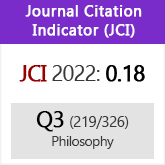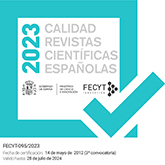Social crossroads of innovation
DOI:
https://doi.org/10.3989/isegoria.2013.048.01Keywords:
Innovation, Social Innovation, Social Milieu, Science PolicyAbstract
Recent and growing literature on innovation has produced a good number of definitions and categorizations that reflect their disciplines and approaches of origin, as well as their theoretical and practical commitments. The distinction between product innovation and process innovation, or the classification according to the degree of novelty produced (or innovation “intensity”), are among the taxonomical strategies. Although classical approaches on innovation have systematically ignored its social aspects, the new and successful category of “social innovation” constitutes a label that includes very diverse types of practices. In this contribution we will analyze the different understandings of “social innovation” and we will argue that an appropriate innovation should always be a kind of social innovation.
Downloads
References
Barnes, B. (1998), The Nature of Power, Cambridge: Polity Press.
Bijker, W. (1995), Of bicycles, bakelites and bulbs: Toward a Theory of Sociotechnical Change, Cambridge, MA: MIT Press.
Bijker, W., T.P. Hughes y T. Pinch (eds.) (1987), The Social Construction of Technological Systems: New Directions in the Sociology and History of Technology. Cambridge, MA: MIT Press.
Bijker, W. y J. Law (eds.) (1992), Shaping Technology/Building Society: Studies in sociotechnical change, Cambridge, MA: MIT Press.
Callon, M. and Rabeharisoa, V. (2003), "Research 'in the wild' and the shaping of new social identities," Technology in Society 25: 193-204. http://dx.doi.org/10.1016/S0160-791X(03)00021-6
Echeverría, J. (2008), "El Manual de Oslo y la innovación social", Arbor CLXXXIV/732 (julio-agosto): 609-618.
Edwards-Schachte, M.E., C.E. Matti y E. Alcántara (2012), "Fostering Quality of Life through Social Innovation: A Living Lab Methodology Study Case", Review of Policy Research 29/6: pages 672–692. http://dx.doi.org/10.1111/j.1541-1338.2012.00588.x
Guston, D. (2000), "Retiring the Social Contract for Science", Issues in Science and Technology, verano de 2000.
Mulgan, G., S. Tucker, R. Ali y B. Sanders (2007), Social Innovation: What it is, why it matters and how it can be accelerated. Oxford: Skoll Centre for Social Entrepreneurship.
Núñez Jover, J. y J.A. López Cerezo (2008), "Technological innovation as social innovation: Science, technology, and the rise of STS studies in Cuba", Science, Technology and Human Values 33/6: 707-729. http://dx.doi.org/10.1177/0162243907306707
OECD (1997), National Innovation Systems, París: OECD.
OECD (2005), Oslo Manual: Guidelines for Collecting and Interpreting Innovation Data, 3ª ed., París: OECD.
RICYT/OEA/CYTED (2001), Manual de Bogotá: Normalización de Indicadores de Innovación Tecnológica en América Latina y el Caribe. Bogotá: RICYT/OEA/CYTED.
Sabeti, (2009), The Emerging Fourth Sector. Washington, DC: The Aspen Institute.
Sebastián, J. (2000a), "Guía Iberoamericana de la Administración Pública de la Ciencia", en www.campus-oei.org/guiaciencia/espana.htm (consultado el 7 de diciembre de 2012).
Sebastián, J. (2000b), "Las lógicas de la ciencia y la tecnología en el contexto de la gobernabilidad democrática", Cadernos de Gestâo Tecnológica 47.
Sebastián, J. y E. Mu-oz (eds.) (2006), Radiografía de la investigación pública en Espa-a. Madrid: Biblioteca Nueva.
Todt, O., M. I. González y B. Estévez (2011), "Conflict in the Sea of Trafalgar: Offshore wind energy and its context", Wind Energy 14/5: 699-706. http://dx.doi.org/10.1002/we.446
Downloads
Published
How to Cite
Issue
Section
License
Copyright (c) 2013 Consejo Superior de Investigaciones Científicas (CSIC)

This work is licensed under a Creative Commons Attribution 4.0 International License.
© CSIC. Manuscripts published in both the printed and online versions of this Journal are the property of Consejo Superior de Investigaciones Científicas, and quoting this source is a requirement for any partial or full reproduction.All contents of this electronic edition, except where otherwise noted, are distributed under a “Creative Commons Attribution 4.0 International” (CC BY 4.0) License. You may read here the basic information and the legal text of the license. The indication of the CC BY 4.0 License must be expressly stated in this way when necessary.
Self-archiving in repositories, personal webpages or similar, of any version other than the published by the Editor, is not allowed.














